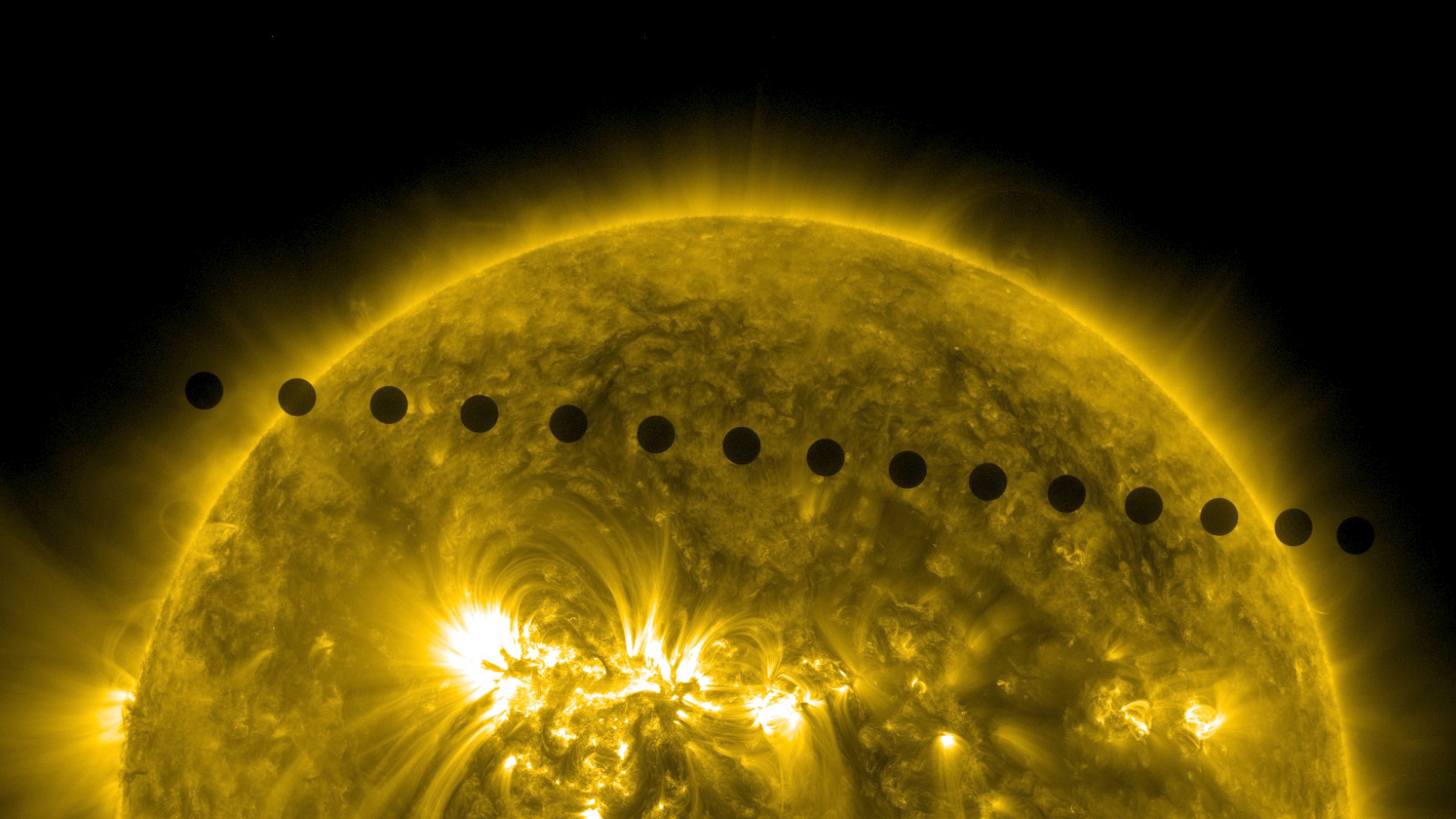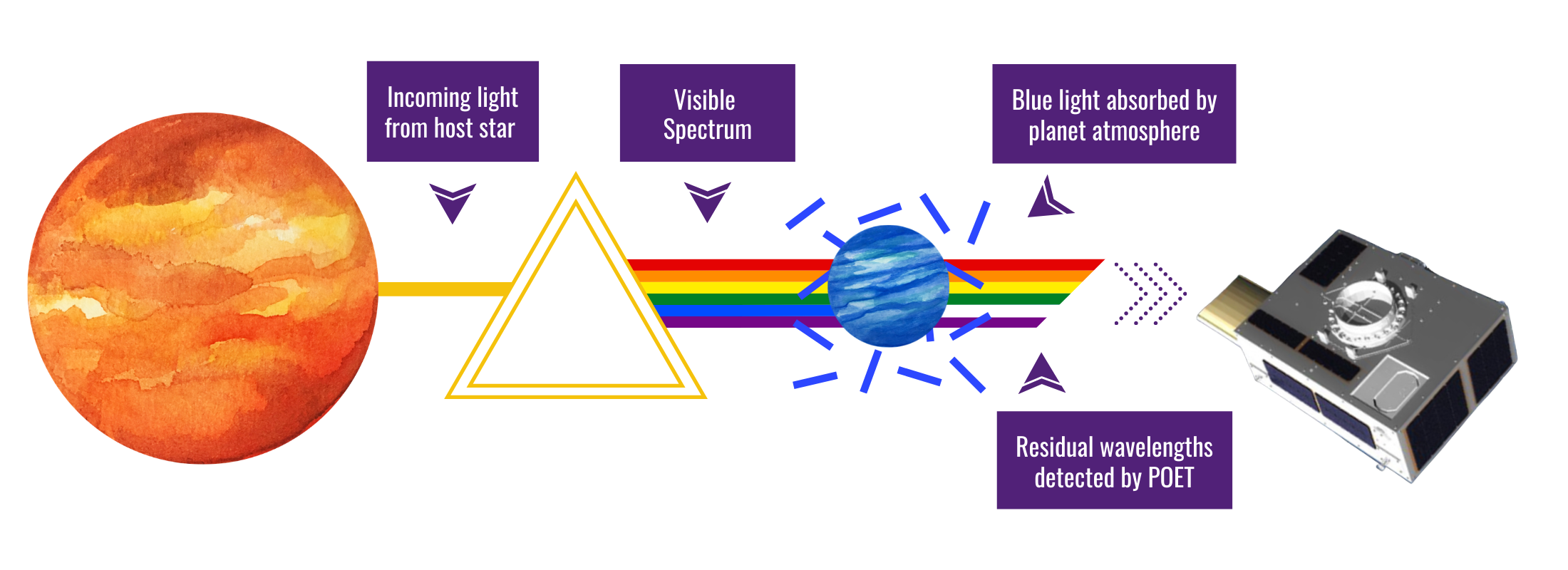
The depth of the transit is directly related to the planet’s radius. In short, a big planet blocks more light!

On June 5th, 2012, the Solar Dynamic Observatory (SDO) managed to observe a rare, predictable solar event - the transit of Venus across the face of the Sun. The next time this phenomenon will be observed is in the year 2117. Mark your calendar!
Like POET, the SDO is a space-based telescope which allowed it to capture this 6-hour event with extreme clarity.

The image above is a composite of several wavelengths of extreme ultraviolet light and the visible-light spectrum. You can clearly see the path that Venus makes as it follows along it's orbit.
Image courtesy of NASA/SDO

Our sky is blue because of phenomenon called Rayleigh Scattering. As sunlight enters Earth's atmosphere, the light with smaller wavelengths (mostly blue-hues) are scattered by particles in the atmosphere itself.

POET is using this same principle to examine the atmospheres of exoplanets. By measuring how much light the planet blocks at different wavelengths, we can begin to understand its composition.